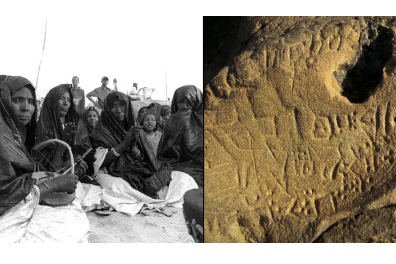Discovering the language
A minority language everywhere, it is diversified into numerous dialectal varieties whose demographic importance ranges from a few hundred to several million individuals. The number of Berber speakers is difficult to estimate in the absence of reliable linguistic censuses, and the general sociolinguistic situation is highly unfavorable to the Berber language. Berber speakers are to be found mainly in Morocco (40-45% of the population) and Algeria (25-30%), in Niger, Mali and Burkina-Faso (Tuareg), in Libya, Tunisia and at the extremities of the Berber domain, in Mauritania and Egypt. It's also worth mentioning the large population residing outside the traditionally Berber-speaking regions, notably in the major cities of Algeria and Morocco, but also in Europe, especially France, where Berber immigration is very old and numerically considerable: the Kabyles alone probably represent nearly a million people there.
While Tuareg has enjoyed "national language" status since independence in Niger and Mali, Berber has long remained without any institutional recognition in Algeria and Morocco. In both countries, however, the status of Berber has improved considerably in recent years. In Algeria, Berber has been a "national language" since 2002, and in Morocco it has been an "official language" since 2011. It will take many years for the effects of these changes in status to be significant, especially as dialectal variation and the multiplicity of different languages do not help matters. Throughout the Berber-speaking world, the majority of varieties are endangered in countries where the language is not recognized, in Mauritania, Tunisia and Egypt in particular, but also in Algeria, for example, where several languages are on the brink of extinction.
Although Berber is essentially an oral language, for at least two and a half millennia the Berbers have had their own writing system called "Libyco-Berber" (tifinagh in Berber). It's an alphabetic (consonantal) system with traditionally rather restricted uses (funerary, symbolic and playful). Today, this alphabet is still used by the Tuaregs and has been extended, in adapted forms, to Kabyle and Moroccan circles. Since the 20th century, Berber writing has mainly used the Latin alphabet (with various adaptations) or the Arabic alphabet (particularly in Morocco). Since 2003, Morocco has chosen the neo-tifinagh alphabet as the "official" graphic system for Berber.
Berber has been in contact with many foreign languages since ancient times: Punic first, with Carthage and other Phoenician settlements; Latin throughout Roman rule and the Christian period; Arabic, since the conquest of North Africa and the Islamization of the Berbers (early 8th century) by the Arabs. French, finally, through colonization. But it's above all the influence of the Arabic language, which has been at work for 13 centuries, which is, in almost all dialects, very noticeable, particularly at the level of the lexicon.
Studying Berber at Inalco
The teaching of Berber at Inalco began in 1913. It combines practical initiation to different dialects with theoretical training in linguistics, literature and civilization. Three varieties are currently taught at Inalco: Kabyle (taqbaylit, Algeria), Chleuh (tachelhit, southern Morocco) and Tuareg (tamacheq, Sahara-Sahel). Inalco is the only institution in Europe to offer a complete Berber curriculum, from bachelor's degree to doctorate.
